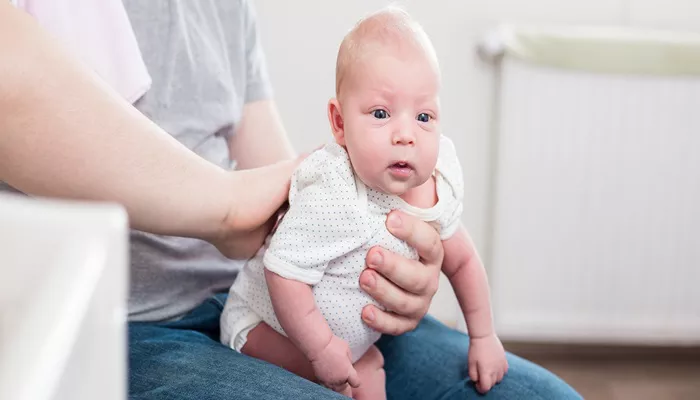Burping is a crucial part of feeding a newborn. Newborns tend to swallow air while feeding, which can cause discomfort and gas. Burping helps release this trapped air, reducing the likelihood of gas pains and making the baby more comfortable. Understanding when to burp a newborn can significantly impact their feeding experience and overall well-being.
Understanding the Importance of Burping
Signs Your Baby Needs to Burp
Babies exhibit certain behaviors that indicate the need for a burp. Recognizing these signs can help parents decide the best time to burp their newborns. Common signs include:
Fussiness during or after feeding
Squirming and pulling away from the breast or bottle
Clenching fists or arching the back
Hiccups or spitting up
When to Burp a Breastfed Baby
During Feeding
Breastfed babies may need to burp less frequently than bottle-fed babies because they tend to swallow less air. However, it’s still important to burp them during feeding to prevent discomfort. Here are the best times to burp a breastfed baby:
Switching Breasts: Burp the baby when switching from one breast to the other. This allows the baby to release any swallowed air and take a break before continuing to feed.
Mid-Feed Break: If the baby seems fussy or uncomfortable while feeding, take a break to burp them. This can help them continue feeding more comfortably.
After Feeding
Once the feeding session is complete, it’s essential to burp the baby to release any trapped air. Hold the baby in an upright position and gently pat or rub their back to encourage burping.
When to Burp a Bottle-Fed Baby
During Feeding
Bottle-fed babies often swallow more air, making frequent burping necessary. Here are the best times to burp a bottle-fed baby:
Every Few Ounces: Burp the baby every 2-3 ounces (60-90 ml) of milk. This prevents the buildup of air in the stomach and reduces the risk of discomfort.
When Switching Bottles: If the baby is using more than one bottle during a feeding session, burp them when switching to a new bottle.
After Feeding
Just like breastfed babies, bottle-fed babies should be burped after feeding. This helps release any remaining air and ensures the baby is comfortable and ready for rest.
SEE ALSO: Why Do Newborns Get Hiccups So Often?
Techniques for Effective Burping
Different techniques can be used to burp a newborn. Experimenting with various methods can help determine which works best for your baby. Common burping techniques include:
Over-the-Shoulder Method
Hold the baby upright with their head resting on your shoulder.
Support the baby’s bottom with one hand and gently pat or rub their back with the other hand.
Keep a burp cloth on your shoulder to catch any spit-up.
Sitting-Up Method
Sit the baby on your lap, facing away from you.
Support the baby’s chest and head with one hand, holding their chin.
Use the other hand to pat or rub the baby’s back gently.
Lean the baby slightly forward to help release trapped air.
Lying-Down Method
Lay the baby face-down on your lap.
Support the baby’s head, ensuring it’s higher than their chest.
Gently pat or rub the baby’s back.
Tips for Successful Burping
Ensuring effective burping involves more than just timing and technique. Here are additional tips for successful burping:
Stay Calm and Patient: Burping can take time. Stay calm and patient, as rushing can make the process less effective.
Use Gentle Pressure: Apply gentle pressure while patting or rubbing the baby’s back. Avoid using excessive force, as newborns are delicate.
Keep the Baby Upright: Hold the baby in an upright position for at least 10-15 minutes after feeding. This helps prevent reflux and allows any remaining air to escape.
Monitor Feeding Position: Ensure the baby’s head is higher than their stomach while feeding. This reduces the amount of air swallowed.
Avoid Overfeeding: Overfeeding can increase the likelihood of gas and discomfort. Feed the baby smaller amounts more frequently if necessary.
Special Considerations
Premature Babies
Premature babies may require more frequent burping due to their underdeveloped digestive systems. Consult with a healthcare provider for specific guidance tailored to your premature baby’s needs.
Babies with Reflux
Babies with gastroesophageal reflux disease (GERD) may need to be burped more often and held upright for longer periods after feeding. Follow your pediatrician’s recommendations to manage reflux effectively.
Fussy Eaters
Fussy eaters may need additional burping sessions during feeding. If the baby becomes fussy and refuses to eat, try burping them to alleviate any discomfort before resuming feeding.
Myths and Misconceptions About Burping
Myth: All Babies Need to Burp After Every Feeding
While most babies benefit from burping, some may not need to burp after every feeding. If your baby seems comfortable and shows no signs of gas, they may not need to burp as frequently.
Myth: Spit-Up Indicates Poor Burping
Spit-up is common in newborns and doesn’t necessarily indicate poor burping. As long as the baby is gaining weight and seems healthy, occasional spit-up is normal.
Myth: Burping is Only Necessary for Bottle-Fed Babies
Both breastfed and bottle-fed babies can swallow air during feeding. Therefore, burping is important for both, although the frequency may vary.
Conclusion
Burping is a vital part of a newborn’s feeding routine. Knowing when and how to burp your baby can prevent discomfort, reduce gas, and promote better feeding experiences. Whether your baby is breastfed or bottle-fed, paying attention to their cues and using effective burping techniques will ensure they remain comfortable and content.
Remember, each baby is unique, and what works for one may not work for another. Be patient and willing to adapt your approach as needed. Consulting with a pediatrician can provide additional guidance tailored to your baby’s specific needs.


